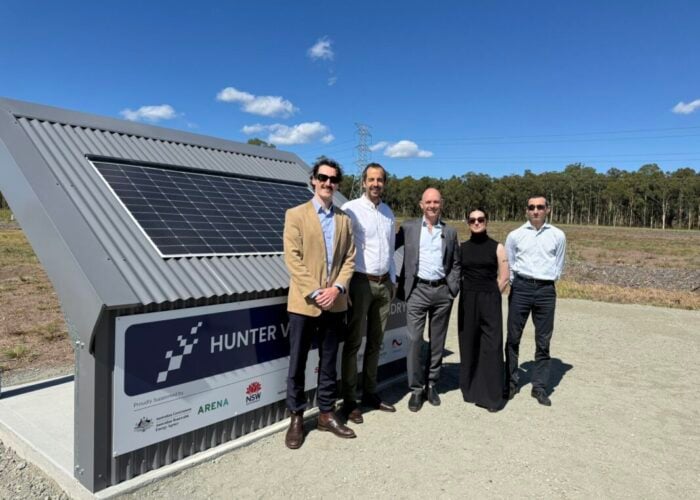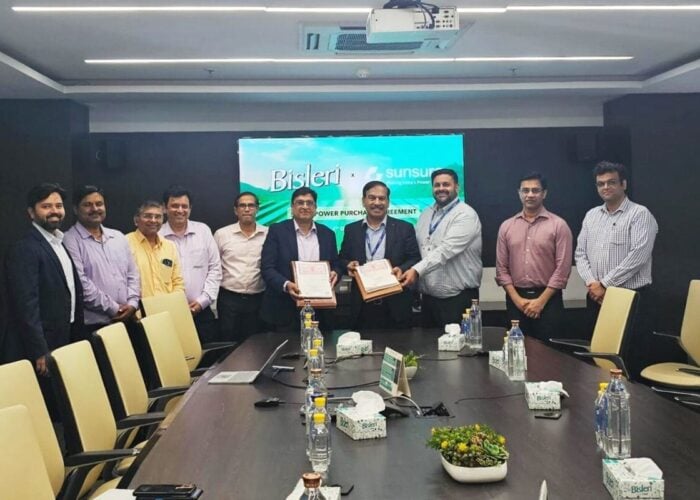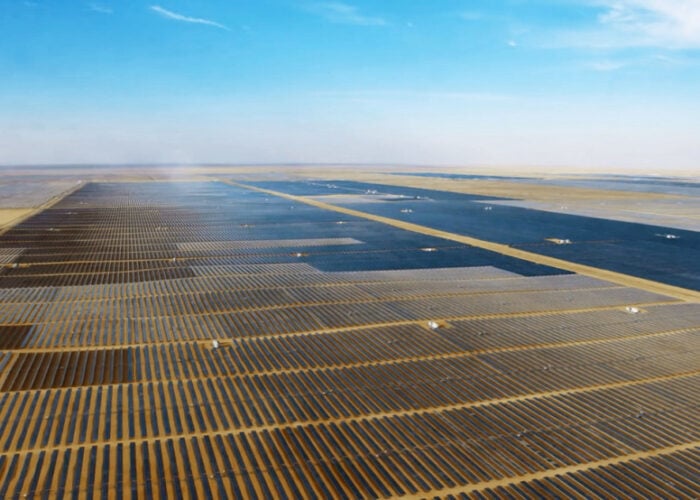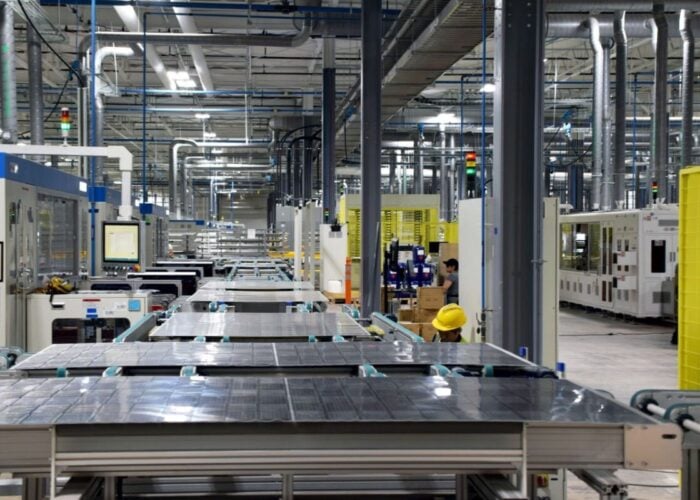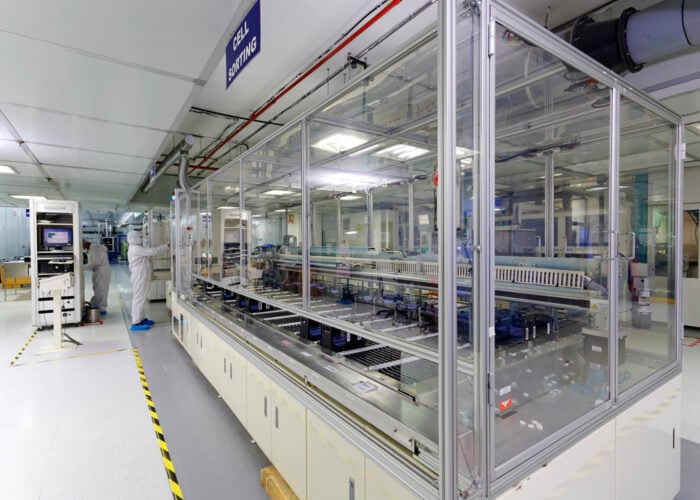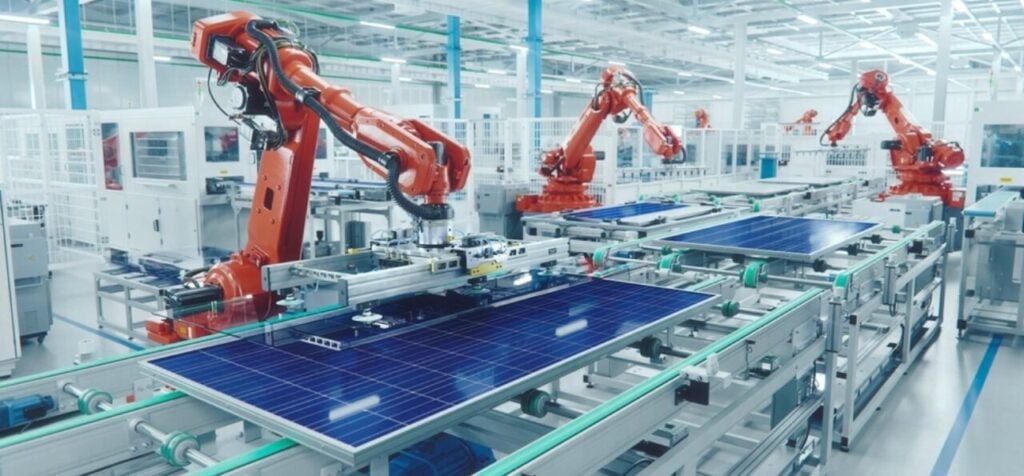
Indian module manufacturer Ahaan Solar has started construction of a 2GW solar module assembly plant in Rohnat, Haryana – about 150km west of New Delhi.
Spanning over 68,000 square-meters, the plant will be built in two phases with a total investment of INR8 billion (US$95.8 million). The first phase will include a 600MW Tunnel Oxide Passivated Contact (TOPCon) module production line set to begin operations by mid-2025. Ahaan Solar expects to generate over 600 direct and 1,000 indirect jobs at the plant.
Try Premium for just $1
- Full premium access for the first month at only $1
- Converts to an annual rate after 30 days unless cancelled
- Cancel anytime during the trial period
Premium Benefits
- Expert industry analysis and interviews
- Digital access to PV Tech Power journal
- Exclusive event discounts
Or get the full Premium subscription right away
Or continue reading this article for free
“To stay ahead of the curve, we chose to start with TOPCon from day one. It represents the next phase in solar module technology,” founder of Ahaan Solar, Aniruddh Agrawal, told PV Tech.
“The market is clearly shifting in this direction, and many players are transitioning from mono PERC to TOPCon. It offers higher efficiency, better temperature performance, and stronger bifacial gains compared to mono PERC. That said, our fully automatic machines are flexible and can manufacture mono PERC modules too – with only minor modifications.”
Backed by green hydrogen manufacturer Airox Nigen, the 2GW plant marks Ahaan Solar’s debut in the Indian module manufacturing space.
Made in India, for the World
According to the firm, the plant aligns with the country’s ‘Make in India’ and National Solar Mission initiatives, as it will initially use imported cells but gradually shift towards domestic sourcing, with plans to localise further through backward integration and joint ventures as production volumes grow.
“Our focus is on sourcing key Bill of Materials (BoM) components from Indian manufacturers, while we will begin with imported cells. We are also procuring Domestic Content Requirement (DCR) cells, which are essential for many government tenders,” Agrawal added.
India stands at the cusp of becoming a global solar manufacturing hub (Premium access), with targets to ramp up module capacity to 160GW, cell capacity to 120GW, and polysilicon and wafer capacity to 100GW by 2030. Government initiatives such as basic customs duties, approved domestic supplier lists, and the production-linked incentive (PLI) scheme are driving this growth.
The firm said it has not applied under the central government’s Production-Linked Incentive (PLI) scheme but is actively engaged in discussions with the Haryana government to explore potential support and state-level incentives for manufacturers. These talks are ongoing, and the company remains optimistic about receiving some form of assistance. Additionally, the company is targeting both domestic and international markets.
Agrawal confirmed that his company is domestically working with engineering, procurement, and construction (EPC) firms and original equipment manufacturers (OEMs). While, internationally, Ahaan is exploring export options to the US, Europe, and Middle East and North Africa (MENA) regions – especially as demand for non-Chinese origin modules increases.
Globally, the solar industry has faced renewed headwinds (Premium access), with the US under Donald Trump’s second term rolling back renewable support, imposing tariffs, and threatening key Inflation Reduction Act tax credits – moves that have impacted China’s solar exports and accelerated a global shift away from Chinese products.
“With the evolving global trade dynamics such as US tariffs and the push to reduce dependence on Chinese [imports],” continued Agrawal, “imports certainly played a role in our planning.”


